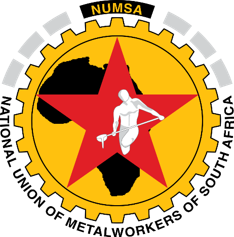MotoHealth confronted with challengesTwo things are making Numsa motor members mad with their medical scheme – MotoHealth. Numsa benefits officer, Sam Tsiane, explains what Numsa is doing to ease your concerns.
Two changes were made at MotoHealth at the beginning of the year.
Firstly, it introduced capitation on the Essential and Custom Options.
Secondly, the service administrator and benefits were changed.While the scheme’s intentions were to improve service to members, instead Motohealth has seen the biggest loss ever in terms of members.
While some of the reasons might be genuine, in some cases it is because of lack of understanding by the members. We will therefore in the next two series of Numsa News clarify some of the key challenges:
Capitation: A Medical Aid Scheme has two options when dealing with service providers (Doctors, Dentists, pharmacies and hospitals).
It can sign an agreement with them that they will charge a certain fee per month to provide treatment to members each and every time they are sick irrespective of the number of consultations.
Alternatively, they can agree that the doctor will be paid an absolute minimum fee – the National Health Price Reference List. This fee is set by the Department of Health as a minimum rate.
The problem is that the contribution of a member of the Custom and Essential options is less than his/hers expenditure on service providers. The scheme is not meant to be a profit making organisation.
But if an organisation’s expenditure is more than its income, it is not sustainable. The fund has experienced an increase in expenditure but it could not implement a big contribution increase because of its membership.
Capitation was the only option to manage the escalating costs. Members are not happy about the capitation option because it means they cannot choose their doctors. Instead the scheme chooses the doctors.
However members are encouraged to request the scheme to contract their doctors into the Motohealth scheme.
But be warned – not all doctors will agree to be contracted – it limits the amount of money that they can claim from the scheme!Some doctors are not happy about the option because they can no longer draw big sums of money from the scheme.
Chronic TreatmentWhen the administration of Motohealth changed, members who were registered under the chronic benefits on the previous administration system did not reflect on the new administration system.
As a result, medicines for the chronic treatment were paid out of day to day treatment therefore members’ day-to-day benefits were soon exhausted.
However, the scheme has instructed the administrator to ratify the mistake. “We want to apologise to the affected members for the mistake and promise that it will not happen again,†says Elias Kubeka, the Motor National Sector Co-ordinator.
Compulsory medical scheme for metal and engineering industrySam Tsiane
The Numsa Central Committee held in July 2009 has agreed that the new medical aid in the engineering industry should be compulsory for all workers working in this industry.
However, those workers that belong to another medical scheme can ask for exemption.During the 2007 wage negotiations, it was agreed that the industry must establish a medical aid scheme, especially since the government is in the process of making it compulsory for all working people to belong so that the public service can be freed to treat unemployed people.
The ultimate objective is to establish a National Health Insurance scheme. We have done an investigation about the affordability as well as the benefits. We think there will be three options for engineering workers:
Lower Option:This option will allow members to consult general practitioners (doctors) and dentists about five times per year for about R180 per month. The cheaper option is to contract certain doctors to provide service to members.
This option is called capitation.These members will rely on public hospitals if they are hospitalized.
Standard OptionThis option will cost about R2000 per month. The member will have available chronic treatment, specialist and private hospitals and doctors may be allowed to charge up to 150 % of the standard rates -National Health Pricing Reference List (NHPRL). However, the day to day benefits (doctors, dentists, pharmacies) will be limited to about R5 000 per annum.
Standard Plus or Comprehensive This option will provide about 200 % of the Standard Option with a limit of about R8000 for day to day benefits. The contribution will be about R3000 per month.
Member and employer to share contributionsMembers will pay half the contributions and the employer the other half.
Before the end of September, trade unions will meet with the employers to finalise the principle of compulsory membership thereafter set up operation systems like offices, information technology, negotiate with service providers like Doctors, Specialists, hospitals etc. said Vusi Mabho Engineering Sector Co-ordinator.
Parties are looking at an “implementation date of June 1 2010,†says Numsa engineering sector coordinator, Vusi Mabho. “We want a cheap scheme for our members and we will not allow service providers to exploit members.â€
Numsa develops retirement fund policies for Cosatu congressIn July 2009, Numsa worker trustees from company and industry provident funds gathered to listen to inputs from experts in the retirement industry on issues relevant to trustees.
A month later, delegates plus Numsa’s national executive committee (see photo) gathered to adopt resolutions around trustee training and the importance of funds adhering to PF130, bulking by administrators of provident funds, surpluses in retirement funds as well as socially responsible investment.
Many of these resolutions Numsa took to the Cosatu September congress some of which were passed.
Source
Numsa News
